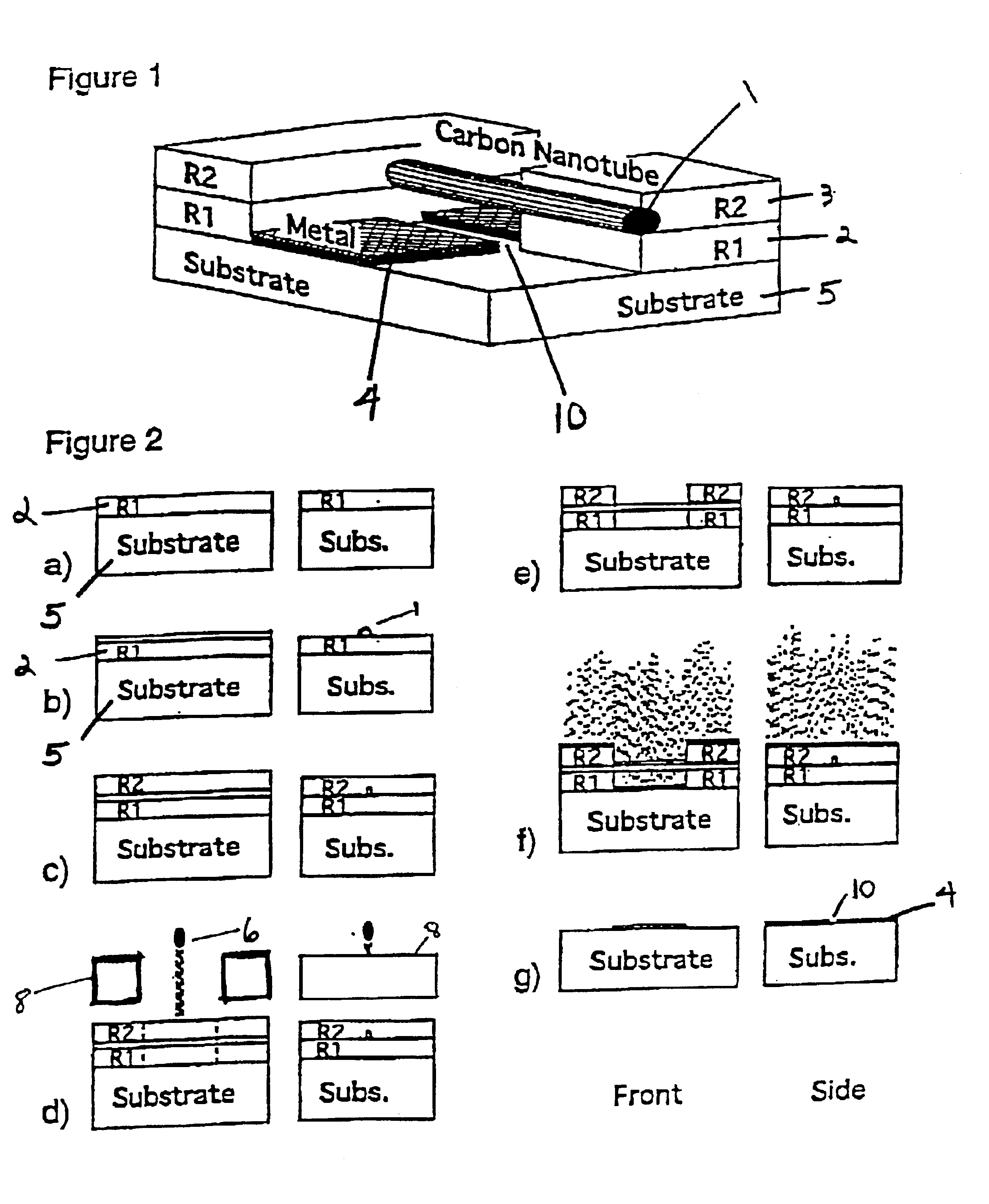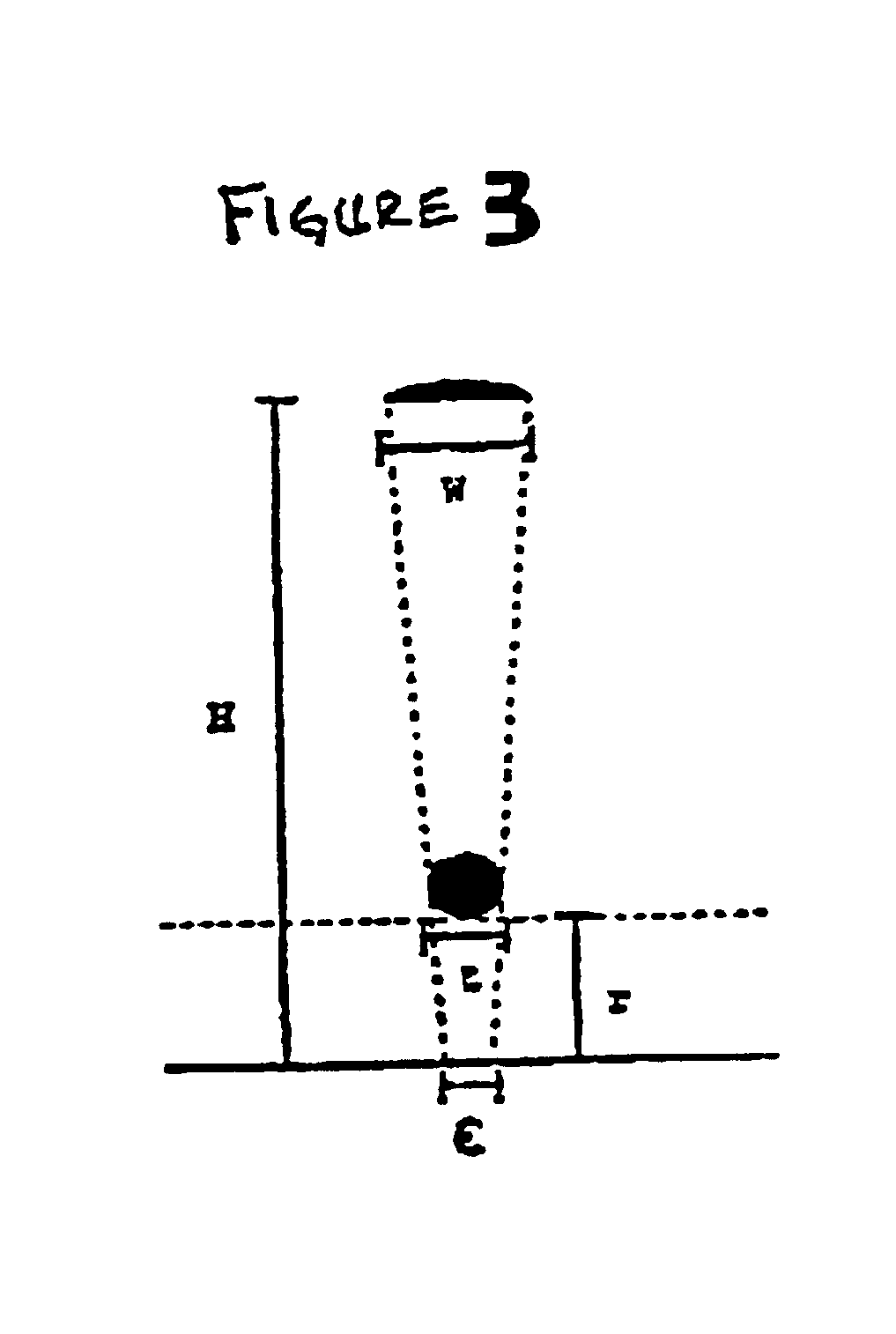Fabrication of nanometer size gaps on an electrode
a nano-gap, electrode technology, applied in the direction of instruments, photo-taking processes, photomechanical devices, etc., can solve the problems of low yield, complex early methods for producing nano-gaps, and the building blocks of future electronic devices will be found in such systems
- Summary
- Abstract
- Description
- Claims
- Application Information
AI Technical Summary
Benefits of technology
Problems solved by technology
Method used
Image
Examples
Embodiment Construction
[0021]The present invention is directed to a method of fabricating nanogaps on an electrode. The invention may utilize single-wall nanotubes (SWNTs), or a bundle of SWNTs, or multi-wall “nanotubes” (MWNTs). For simplicity, as used herein, the term nanotube (NT) may refer to an SWNT, an SWNT bundle or an MWNT, all of which can be used for this process. Each of these forms of NTs is better suited for certain tasks. For example, individual SWNTs will provide the narrowest gaps, while the large mechanical rigidity of MWNTs are best for making long gaps. The instant method produces gaps that vary in size from 1 nm to 50 or 100 nm in diameter.
[0022]FIG. 1 shows the profile of the tri-layer system with a partial monolayer of an NT 1 embedded between two layers, shown as first layer 2 and second layer 3. In an embodiment of the invention, the two layers are made of resist material (such as PMMA). However, as mentioned above, there are a variety of two-layer systems that may be used for the ...
PUM
| Property | Measurement | Unit |
|---|---|---|
| diameter | aaaaa | aaaaa |
| diameter | aaaaa | aaaaa |
| diameter | aaaaa | aaaaa |
Abstract
Description
Claims
Application Information
 Login to View More
Login to View More - R&D
- Intellectual Property
- Life Sciences
- Materials
- Tech Scout
- Unparalleled Data Quality
- Higher Quality Content
- 60% Fewer Hallucinations
Browse by: Latest US Patents, China's latest patents, Technical Efficacy Thesaurus, Application Domain, Technology Topic, Popular Technical Reports.
© 2025 PatSnap. All rights reserved.Legal|Privacy policy|Modern Slavery Act Transparency Statement|Sitemap|About US| Contact US: help@patsnap.com



